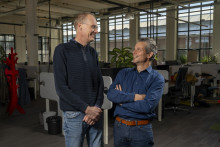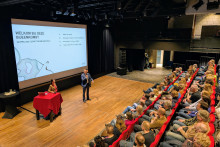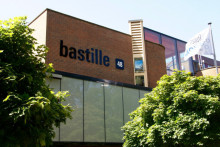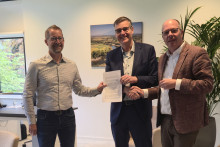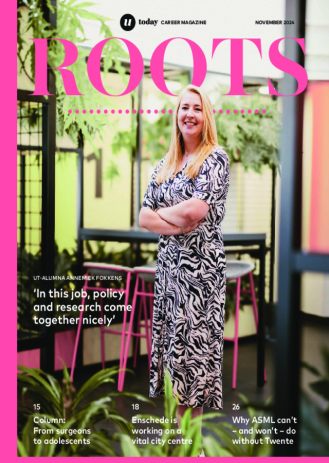‘The name BAAT is difficult to explain to international clients,’ Nijenbanning begins. 'Twenty-five years ago, we just grabbed a dictionary. Under the B, we found 'Baat; benefit, to be useful, to improve physically'. Well, that fitted very well with what we were aiming for.'
Gert Nijenbanning (general director and business development) and Arthur Aalsma (technical director) both did PhD research in biomedical mechanical engineering at the UT. Nijenbanning developed an orthosis for people with scoliosis, an abnormality of the spine that occurs in children. 'I had five patients who used the brace and benefited from it. Partly because of this, I discovered that I wanted to make a product and was less interested in the scientific world. I wanted to take the product to the market and not let it disappear in a drawer.'
Chances
At the same time, Aalsma was developing a leg extension implant. Aalsma: 'My research showed that there was a gap between the possibilities of technology and the state of orthopaedic and traumatological equipment at the time. There were opportunities there.' Nijenbanning: 'And in that challenge we found each other; wanting to bring new medical equipment to the market. We started with my scoliosis orthosis. Not the biggest success, but it did form the basis for where we are today.'
Discover for yourself and do it yourself
The two started 'without any knowledge of entrepreneurship', as they describe it themselves. Nijenbanning: 'We figured it out as we went along.' Aalsma: 'We are in favour of discovering and doing things ourselves.' Nijenbanning: 'That also defines our company culture. There is a lot of involvement, but also a lot of freedom.' Nijenbanning: 'Our clients consist of three groups: doctors, start-ups, and the so-called Original Equipment Manufacturers (OEMs). Based on our expertise, we help them convert ideas into products. As a result, clients do not need to set up a business themselves. Companies that are looking for innovation or think that equipment is in need of renewal also come to us. And we work together with multinationals.'
Anniversary book
The Hengelo company operates worldwide and employs 35 people. The anniversary book was Arthur’s idea. 'The book is intended for both existing and new customers and is mainly a gift to ourselves. Entrepreneurs usually look ahead, but I thought the twenty-fifth anniversary was a great milestone to stop and look back.' Nijenbanning: 'Although we are certainly proud of our new concepts, for us the highlights of 25 years of BAAT Medical Devices are not so much in products, but in what we have created. A working environment where people are willing to go all out for the development of medical equipment.'
Future
According to the two, the market for medical equipment is changing rapidly. 'Europe has traditionally been at the forefront of medical product innovations. But with the introduction of new, stricter European laws and regulations (the so-called MDR), Europe is losing that pioneering role. There is a clear trend that America and emerging countries such as India and the Middle East are taking over that position. We are in the process of adapting to that new reality. In order to continue to grow, the company has teamed up with the German group GBA last year. Nijnenbanning: 'We are now part of a larger whole in which each party has its own specific expertise. Our company benefits from that.' Aalsma: 'Medical devices are complex. Multiple competencies are needed to ensure an optimal product and access to the market. The GBA Group helps us connect those dots better and more completely.'
Looking ahead, the pair expect the development of intelligent implants to take off. 'We’re thinking of implants with multiple functions or which provide feedback. 3D printing will also undergo strong development, especially with regards to custom-made products.'
Aalsma additionally works half a day a week at the UT as an assistant researcher and lecturer in the Biomedical Engineering programme. 'As BAAT, our focus is on the market and customers, but we certainly have something to offer to students when it comes to how medical technology works within the market and how to develop and launch a product.' Nijnenbanning: 'We haven’t always been visible in the region, but you will definitely see more of us in the future.'


